The oldest post-Palaeolithic engravings of the Alps, 5th millennium BC, reveal many contact points with the ancient megalithic art of Brittany. We publish here the complete paper related to the Montjovet-Chenal shelter, Aosta valley; Italian version, with short English abstract and all-sectors tracings. Full text-image searchable flip book (Flash plugin needed). The low-res PDF is also available.
by A. Arcà, D. Daudry, A. Fossati, F. Morello, L. Raiteri
Chenal shelter, six thousand years of iconography
ARCÀ A., DAUDRY D., FOSSATI A.E., MORELLO F., RAITERI L. 2014, Il riparo inciso di Montjovet-Chenal (AO), seimila anni e più di iconica rupestre, in DE MARINIS R.C. (a cura di), Le manifestazioni del sacro e nella regione alpina e nella pianura padana, studi in memoria di Angelo Rampinelli Rota, Atti del Convegno, Brescia, Palazzo Broletto, 23-24 maggio 2014, Brescia, pp. 27-66, DOI: 10.13140/2.1.4082.1444
[short English abstract] Without taking into account, cautiously, the attribution to the Mesolithic of an uncertain deer figure in naturalistic style, the Chenal shelter figurative palimpsest stores a stratigraphy of six and a half millennia of engraving activity. Figures were engraved during various phases of the Neolithic (Middle, Recent and Final, 4500-3700 BC), like the masked-like figures, of the Early Copper Age (“ciliated” figures, half of the 4th mill. BC), of the Final Bronze Age (so-called praying figures, schematic anthropomorphs, 2nd half of the 2nd mill. BC), of the Late Middle Ages, scratched by the soldiers of the Chenal castle and of the contemporary period (graffiti).

Hypothetical (Mesolithic?) deer figure at the Chenal shelter
The engraved surface, discovered in 1994 and better detailed in 2004, only after the archaeological tracing performed by Footsteps of Man for the Superintendency Department of National Heritage and Culture of the Autonomous Region of Aosta valley, fully revealed its precious iconographic wealth. In order to obtain a virtual cast of the surface, the shelter has also been documented by 3D laser scanning, performed by the AdHoc 3D Solutions srl.
Taking in consideration the iconographic items, which act as unica in the alpine rock art panorama, and the comparisons proposed with the ancient megalithic art of Brittany, the Chenal shelter is populated by the oldest post-Paleolithic engravings of the Alps; for these figures only is possible at this stage of the research to assign, concerning the alpine territory, a chronology dating back to the half of the 5th millennium BC.

Iconographic comparisons between the Chenal shelter (left)
and the megalithic art of Brittany (right; 5th mill. BC)
This chronological attribution is probably linked to the contemporary culture expressed by the necropolis with stone cists of the so-called Chamblandes type. The long range comparisons evoke for this site – geographically acting as a door and as a lock of the Aosta valley, which in turn is like a hinge between the Alps and the Po plain – a function of an important crux for the transmission of cultural and symbolic elements.
Regarding the Iberian Peninsula, also the so-called oculados idols may be invoked for a long range iconographic comparison, mainly as concerns the “ciliated” figures of the sector A of the Chenal shelter. For the Iberian “oculados idols”, various radiocarbon dates are available, from the Neolithic to the Bell-beaker period, with a concentration along a 3370-2300 cal. BC chronological range.

Comparison among the “eyed” figures of the Chenal shelter (sector A; right, Footsteps of Man tracing) and the so-called “oculados” of the Iberian peninsula rock paintings; from the left to the right: Abrigo de los Oculados (from Ruiz et al. 2012), Diosa Madre, Collado del Guijarral and Diosa Madre (photo Paco Lorite)
As already specified, the Chenal engraved shelter reveals many similarities with the iconic set of the Armorican megalithic art. In these centuries of the 5th mill. BC such immaterial path is not the only way joining the Alps and Brittany: on one side the over sized axes in jadeitite, omphacitite and nephrite have their main sites of primary supply in the Western Alps (see Pétrequin works), while on the other side their ritual employment is well present in the princely burials of Morbihan Gulf (Mané-er-Hroek, Saint-Michel and Tumiac). The need for one or more connecting route between the two ends is evident.
That being so, the Aosta valley territory may act a primary role for the Neolithic long range movement of such jade artefacts.
You are kindly invited to take a look to the full paper and to the tracings (at the bottom of this page) for an in-depth analysis. The complete catalogue of the figures is available on the web-site of the SVAPA, the Société Valdôtaine d’Archéologie et Préhistoire, the archaeological society who promoted, together with the Superintendency Department of National Heritage and Culture of the Autonomous Region of Aosta valley, the research on the Chenal shelter.
A. Arcà, D. Daudry, A. Fossati, F. Morello, L. Raiteri

5th millennium BC, distribution map of the “shield-shaped” (or idol-shaped) semantic elements (yellow dots), of the “plumed characters” (blue dots), of the stone axe figures (green triangles) and of the main sites of primary supply (white triangles A and B) of jadeitite and omphacitite (map from Google Maps satellite, processing AA)
| . |
The Montjovet-Chenal (AO) engraved shelter, six thousand years and more of rock art;
download the PDF (6 Mb; in Italian)
Flip book details:
- search feature unavailable (bug) in full-screen mode;
- upper bar functions: (left) title, see-go to page numer; (right) search;
- lower bar functions: (left) enable full screen, page thumbnails, PDF download, sound on/off, zoom in/out, search, social share; (right) first-previous-next-last page;
- page double click activates zoom; mouse wheel scrolls pages.
Please note:
- digitalized by TRACCE editing board;
- OCR, text layer, search and flip book features by TRACCE editing board;
- public domain (credit requested).
You may browse and read the flip book up here (search features available) or download the related searchable PDF.
Chenal shelter, tracings of the engraved sectors
(thumbnails, click on figures to get a larger picture)
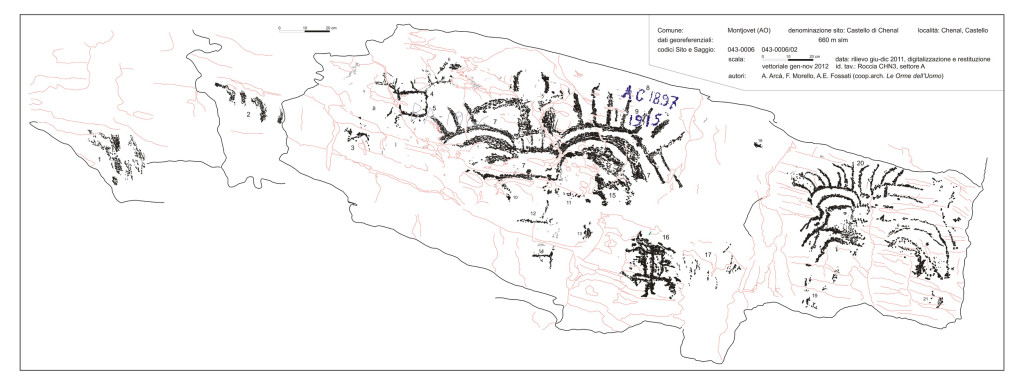
CHN3, sector A (tracings Footsteps of Man for the Superintendency Department of National Heritage and Culture of the Autonomous Region of Aosta valley)

CHN3, sector B (tracings Footsteps of Man for the Superintendency Department of National Heritage and Culture of the Autonomous Region of Aosta valley)
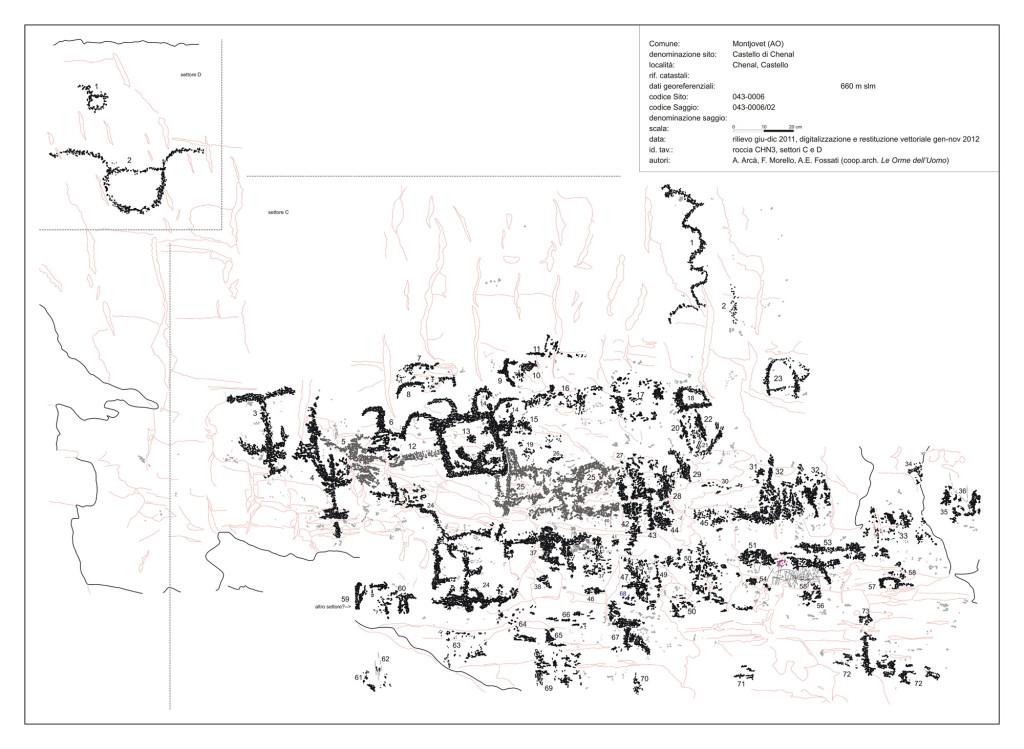
CHN3, sectors C-D (tracings Footsteps of Man for the Superintendency Department of National Heritage and Culture of the Autonomous Region of Aosta valley)
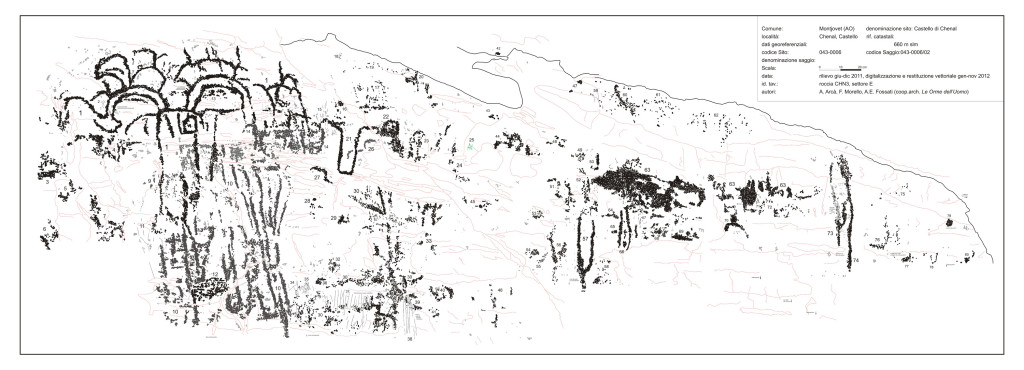
CHN3, sector E (tracings Footsteps of Man for the Superintendency Department of National Heritage and Culture of the Autonomous Region of Aosta valley)
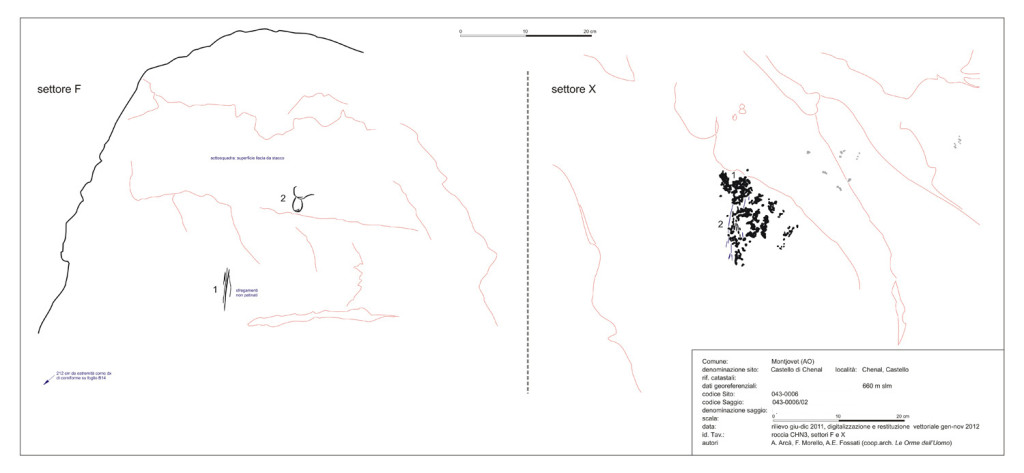
CHN3, sectors F, X (tracings Footsteps of Man for the Superintendency Department of National Heritage and Culture of the Autonomous Region of Aosta valley)
(click thumbnails to open the photogallery)


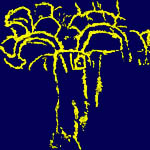
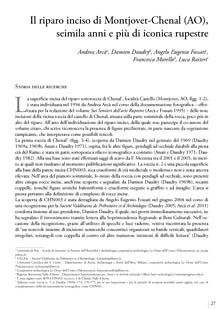
























Leave a Reply